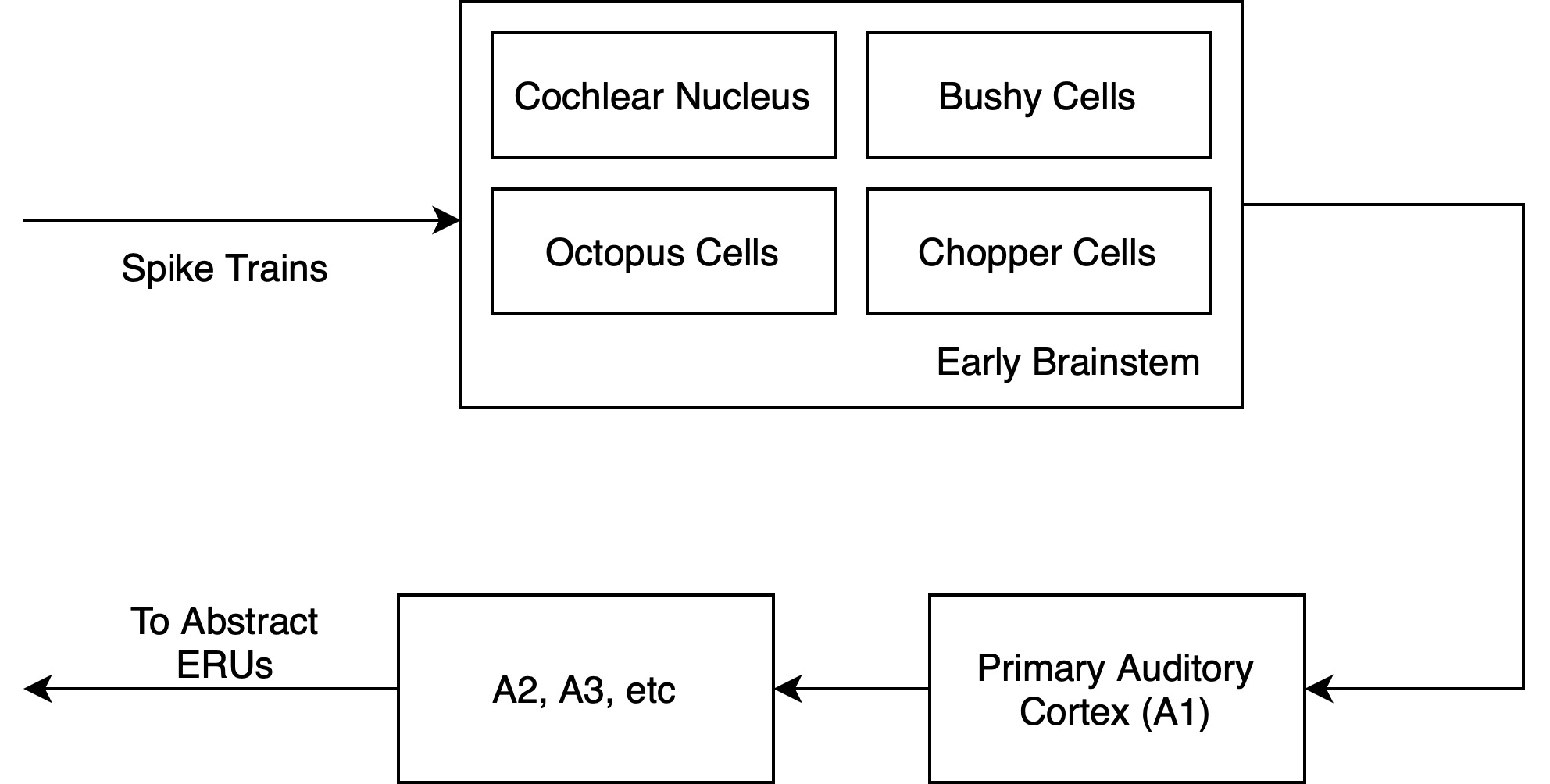Auditory Cortex

In the past two weeks, I’ve focused on designing the auditory cortex. As I covered the audio CMU recently, the transition to the auditory cortex would be smooth, so I prioritized its build over its visual counterpart. Additionally, I’ve refined the auditory nerve fiber implementation to incorporate the volley principle.
Development Activity - https://github.com/akhil-reddy/beads/graphs/commit-activity
Building the Auditory Nerve components - https://github.com/akhil-reddy/beads/blob/main/beads/core/cmu/transportation/audio.py
Please note that some code (class templates, function comments, etc) is AI generated, so that I spend more of my productive time thinking and designing. However, I cross-verify each block of generated code with its corresponding design choice before moving ahead.
Algorithms / Development
Building the Environmental Response System (ERS)
Auditory Nerve Fiber implementation v2- Define biologically accurate constants for the auditory nerve fibers
- For each vesicle release
- For each fiber in the channel
- Add some noise to the above voltage threshold constants (optional)
- If the AN fiber is in the refractory (cool down) period, do nothing
- Else,
- The change in potential dV is defined according to the leaky integrate model
- Add a stochastic component to dV (optional)
- Add dV to the instantaneous potential of the membrane
- If the spike condition is met, generate a spike!
- For each fiber in the channel
Next Steps
Building the Environmental Response System (ERS)
- Building the visual cortex
- Building the ERUs
- Neurotransmitters - Fed by vision’s bipolar and amacrine cells, for example, to act on contrasting and/or temporal stimulus. Neurotransmitters (and their lifecycles) can be added later during ERU development
Deployment
- Overlaying video frames onto the retina, including code optimization for channel processing
- Overlaying audio clips onto the cochlea, including optimization for wave segment processing
- Parallelization / streaming of cellular events via Flink or equivalent
Design Retrospective - Reconciling the audio CMU / cochlea implementation with Beads design
| Design Requirement | Implementation Specifics |
|---|---|
| Spatial hearing | Pinna |
| Spectral shaping | Ear canal |
| Decibel / loudness modulation | Outer hair cells (OHC) with the help of efferent fibers; Basilar membrane’s receptor potential smoothing |
| Pitch tuning | OHC |
| Pitch compartmentalization | Basilar membrane tonotopy |
| Intricate pitch detection | IHC with phase locking |